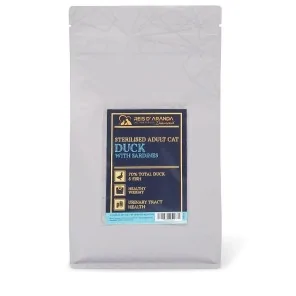The Tornjak originated from genetically homogeneous, almost extinct, indigenous shepherd dogs. These dogs have...
THE SIAMESE CAT
THE ORIGIN OF THE SIAMESE CAT
A description and depiction of the traditional Siamese (Siamese cat) first appears in a collection of ancient manuscripts called Tamra Maew (The Cat Book Poems), believed to be from the Kingdom of Ayutthaya (1351 to 1767 AD). More than a dozen are now preserved in the National Library of Thailand, while others have resurfaced outside Thailand and are now in the British Library and the National Library of Australia. In addition to the ancient Siamese cat, the Tamra Maew also describes other heritage cats of Thailand, such as the Korat cat, which is still bred for preservation in Thailand today and has become popular in other countries, and the Konja or Korn Ja (black cat) and the Suphalak (a Burmese cat controversy).
When the capital, Ayutthaya, was sacked on 7 April 1767 at the end of the Burmese-Siamese War, the Burmese army burned everything in sight. It returned to Burma taking Siamese nobles and members of the royal family captive. Buddha images were hacked to pieces for their gold, and all the royal treasures were stolen. Thai legend has it that the Burmese king Hsinbyushin found and read the poem of the Thai cats in the Tamra Maew. In the poem it is described that Thai cats are as rare as gold and that whoever owns this cat will become rich. He ordered his army to gather all the Suphalak cats and take them back to Burma along with the other treasures. Today, in Thailand, this legend is told as a humorous explanation for the rarity of Thai cats.
Siamese cats are one of the most popular cat breeds in the world. They are known for their distinctive pointed features, including their almond-shaped blue eyes, triangular ears and long, slender bodies. Siamese cats are also known for their intelligence, playfulness and affectionate personality. The pointed cat known in the West as the "Siamese", recognised for its distinctive markings, is one of several Siamese cat breeds described and illustrated in manuscripts called "Tamra Maew" (Cat Poems), which are estimated to have been written between the 14th and 18th centuries.3 In 1878, U.S. President Rutherford B. Hayes received the first documented Siamese to arrive in the United States, a cat named "Siam" sent by the U.S. Consul in Bangkok. In 1884, the British Consul General in Bangkok, Edward Blencowe Gould (1847-1916), brought a breeding pair of the cats, Pho and Mia, to Britain as a gift for his sister, Lilian Jane Gould (who, married in 1895 as Lilian Jane Veley, went on to co-found the Siamese Cat Club in 1901).
The modern Siamese is a breed of cat from the ancient kingdom of Siam, now Thailand. In 1882 they were brought to England and in 1890 to the United States.
Since 1950, this type of Siamese has been gaining prominence and has become the breed of choice for breeders and cat show judges. Perhaps this is why the name "Siamese" was coined for the modern Siamese, as it is the variety that has been the variety that has participated at competition level for all these decades.
THE STANDARD OF THE SIAMESE CAT
The Siamese has an angular, elongated head forming a triangle. The ears are large, broad at the base and pointed at the ends. The combination of head and ears contributes to its regal and alert appearance. The face often has a darker mask around the eyes and muzzle, further accentuating the facial features.
One of the most characteristic features of the Siamese cat is its deep-set almond-shaped eyes, which are always a deep blue. These expressive eyes add a captivating and enigmatic look to the Siamese's personality.
The Siamese cat's body is slender, long and muscular. Their limbs are proportionate, and their hind legs are usually slightly longer than their front legs. This contributes to their agility and athletic abilities. The tail is long, fine and tapering at the tip. It is often carried erect and may have a thicker coat in this area.
The coat is short, fine and silky to the touch. The colouring is darker on the limbs, tail, ears and face, creating a pattern known as colour point. The dark points contrast with the lighter colour of the body. This colour point pattern is characteristic of the Siamese breed. Several variations can be found, such as the traditional Siamese, with dark brown points, and other variants, such as the Balinese and Javanese, which have lighter colours.
On the other hand, the Siamese cat stands upright with a proud and elegant posture. His carriage is an integral part of his charm, showing confidence and self-awareness of his own grace.
Although not a physical characteristic, the Siamese's distinctive vocalisation is noteworthy. They are known to express themselves more audibly than other breeds, using meows and vocalisations to communicate with their owners.
THE SEAL POINT CAT AND THE TRUE SIAMESE
Most of the original Siamese brought from Siam were of the varieties now referred to as "seal point" or seal point: with darker brownish-black tips, which amplify the contrast of the coat with the eyes.
Occasionally other colours appeared, but seal point was the best known and there was much resistance to accepting any colour variety as a true Siamese.
In the end, three more colours were recognised: blue point (blue point, blue Siamese), chocolate point (chocolate point, a diluted form of seal point) and lilac point (lilac point, a violet-grey tone, diluted from blue).
However, in the last 65 years a large number of varieties have been developed and are recognised throughout Europe; but in the United States they are officially called Colour point Shorthairs, to maintain the distinction of the Siamese.
In addition to the original colours, we have other types of varieties of the modern Siamese cat such as the red point Siamese, cream point, tabby point, sorrel point, fawn point and caramel point.
Many common European cats, mongrels and cats of other breeds have the point colouring in different shades, which is why common European cats are often labelled as "Siamese" when they are not.
In order to be able to say that a cat is a Siamese cat, it must have a pedigree issued or endorsed by a national or international association and be identified (microchipped), the microchip being included in the pedigree. This is the only way for a cat to be a true Siamese, otherwise it would be a "point cat".
THE HEALTH OF THE SIAMESE CAT
According to Swedish insurance data, which tracked cats only up to the age of 12.5 years, Siamese and Siamese-derived breeds have a higher mortality rate than other breeds. The median lifespan of the Siamese group was between 10 and 12.5 years; 68% lived to 10 years or more and 42% lived to 12.5 years or more. The Siamese named Scooter holds the record as the oldest male cat in the world, dying at the age of 30. Most of the deaths were caused by neoplasms, mainly mammary tumours. Siamese also have a higher morbidity rate. They are at higher risk of neoplastic and gastrointestinal problems, but have a lower risk of feline lower urinary tract disease. Data from veterinary clinics in England show a higher average lifespan of 14.2 years.
The most common form of progressive retinal atrophy (PRA) in cats (including Abyssinian, Somali and the large group of Siamese-related breeds) is related to a mutation in the rdAc gene, for which DNA testing is available.
The same albino allele that produces coloured dots means that the blue eyes of Siamese cats lack tapetum lucidum, a structure that amplifies the dim light in the eyes of other cats. The tyrosinase mutation also results in abnormal neurological connections between the eye and the brain. The optic chiasm has abnormal uncrossed wiring; many early Siamese had squints to compensate, but like crooked tails, crossed eyes have been seen as a fault, and due to selective breeding, the trait is much less common today. Even so, this lack of tapetum lucidum, even in cats that are not crossed-eyed, reduces the cat's vision at night. This trait has led to their dependence on and interest in humans, which affects their hunting ability, a desirable trait for many owners. However, it makes them vulnerable to urban hazards, such as night-time vehicular traffic. Unlike many other blue-eyed white cats, Siamese cats do not have reduced hearing.
In addition, the Siamese cat is more prone than other breeds to lung infections, especially in childhood, such as feline osteochondrodysplasia, vestibular disease and feline hyperesthesia syndrome.
One of the points we need to be clear about on a daily basis is that a good diet is essential to prevent certain illnesses and extend the life of our cat. One option is Reis d'Aranda's Cereal Free Adult Cat Food with Duck and Sardines or Reis d'Aranda's Kitten Food with Turkey and Chicken.
THE PERSONALITY OF THE SIAMESE CAT
The character of the Siamese cat is very special, being a very affectionate cat and with a certain degree of dependence, so it is best not to leave it all day without the company of people or another cat. Because of its personality, the Siamese cat is ideal for someone who has not had cats before. He has a very noisy meow, but is easy to train. It is a perfect cat for families with or without children. They can live in small flats, but have a fuller life in big houses with a garden where they can develop their hunting instinct.
They are very meowing cats; especially noisy is the Siamese cat in heat, which emits a loud and noisy meow that many owners find difficult to get used to.
CONCLUSION
The Siamese cat is a beautiful and vocal animal that attracts attention wherever it goes, a creature with a long history whose eyes are highly expressive and whose point pattern is extremely popular and striking.
Leave a comment
Log in to post comments
















